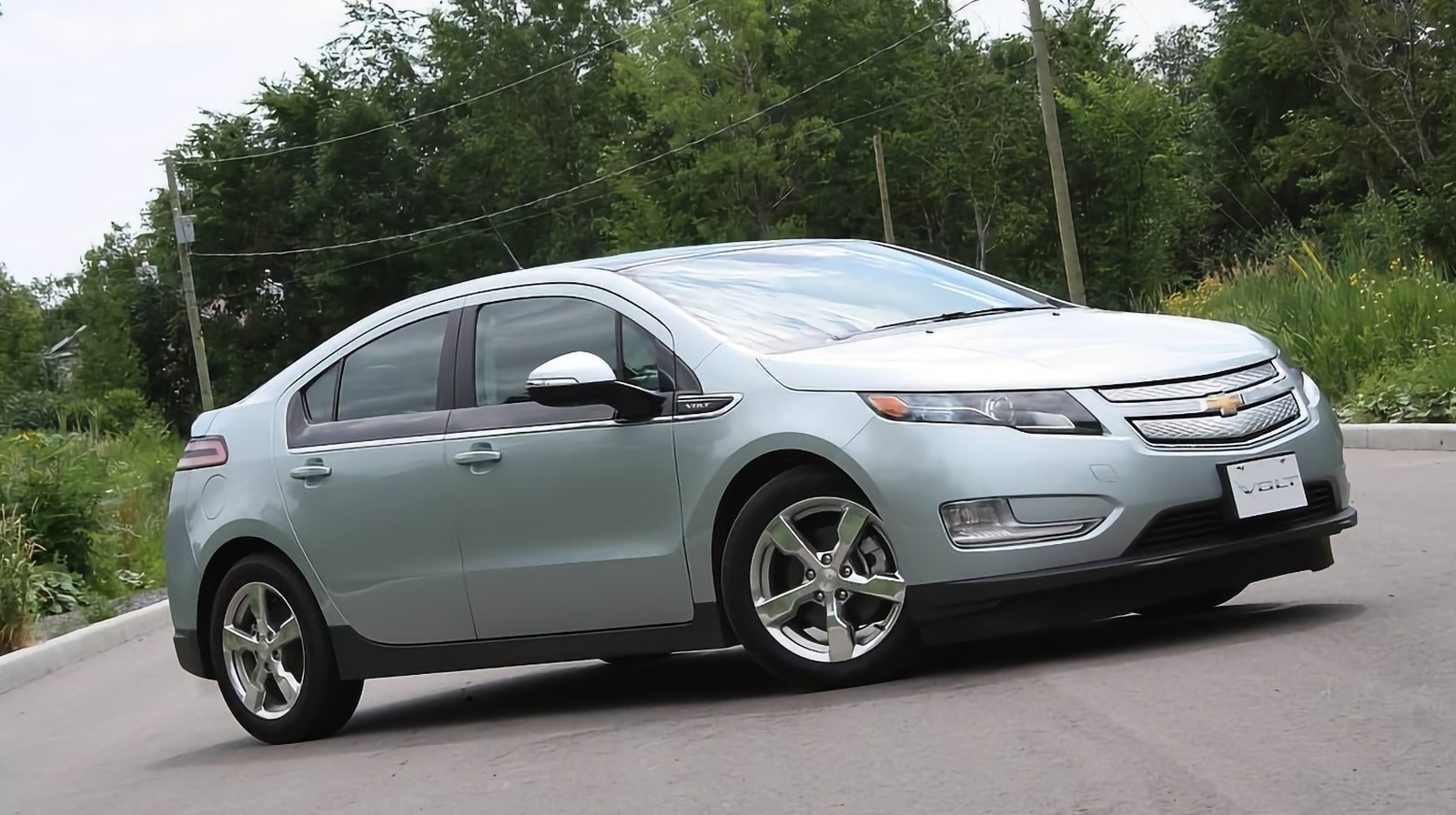
According to the seller, today’s Nice Price or No Dice Chevy Volt is eligible for a $4,000 tax credit and has a replacement battery. That credit could lower the asking substantially, but does it make for an electrifying deal?
Let’s be honest, education costs money. To be fair, not everyone needs to attend college, as a decent living can be earned in a trade such as being an electrician or plumber. Seeking a four-year degree, however, is a six-figure endeavor, with many grads starting out their work life deeply indebted.
Coincidentally, money demands edification. I mean, if you’re going to ask a lot of Benjamins for something, you darn-well better have a full explanation for why it costs so much, or people aren’t going to give you the time of day. That was just the case we saw with the 1997 Lotus Esprit V8 we looked at yesterday. According to the ad, it had to have both its turbos and engine rebuilt, with less than 24K on the clock. At a substantial $59,500 asking price, both the why and the how of that work demanded full explanation. As none was immediately forthcoming, you all sank the Esprit’s price in a 70% No Dice loss.
Kudos to Bob Lutz
I’d like you to think for a moment: is there anyone in the automotive world more influential than Bob Lutz? An itinerant executive, ‘Maximum Bob’ has held corner offices at all of the American Big Three automakers, as well as, for a time, at BMW. Over the years, Lutz has been behind such iconic cars as the Dodge Viper, Cadillac CTS-V, and the last Pontiac GTO.
There were lesser cars championed by Lutz, too. While at GM, he pushed for the Pontiac Solstice and Saturn Sky sports cars to reach dealers. Both were fun but flawed cars. More mundane but probably better for the company’s balance sheet, he was also instrumental in getting the Chevy Cruze to market. Not as profitable, but demanded by a shifting market, was the Chevy Volt, a plug-in electric vehicle with an onboard internal combustion engine that charges its batteries through a second electric motor serving as a generator. Recognizing the need to position the company as a technological and environmental leader in the industry, Lutz spearheaded the development of the Volt’s complex drivetrain and energy storage systems. Additionally, he pushed for the eventual development of putting all that tech into production.
Fit to a ‘T’
This 2012 Chevy Volt is claimed in the ad to have “freshly refurbished” batteries, which is a plus. In the Volt, the two lithium-ion batteries are configured in two packs, with one snugly fitting in the tall center tunnel and the second turned sideways right behind that, making a capital T. Together, they total 16kWh of energy storage, although to encourage a healthy lifespan, Chevy constrained the available capacity to a maximum of 80%, and a minimum of 30%.
That offers a range of around 40 miles on electrons only, with the 1.4-liter gas engine kicking in after that. The batteries can also be topped up via a charge port on the front fender, so those with short commutes could potentially never need the gas engine to kick in. In fact, a real problem for these cars is the gas going skunky, as some owners never use it up.
With just 113,000 miles on the clock, a clean title, and a three-year warranty on that refreshed battery, this Volt looks to be a pretty solid contender as a commuter car for anyone recently forced “back to the office,” or doing Uber Eats and the like.
To its credit
Something else in its favor, at least according to the seller, is that this Volt supposedly qualifies for a $4,000 federal Used EV Tax credit. Naturally, several conditions must be met to claim the credit, and it should be pointed out that the seller must be a licensed dealer for it to be legitimate in the first place. Still, it’s worth investigating if the buyer is someone who actually pays taxes. I mean, the billionaire class that doesn’t isn’t likely going to be interested in a commuter car like this at all. They’re more likely to be traveling on private jets to party islands where… well, let’s just not go there.
For the rest of us, though, there’s a lot to like with this Volt as an efficient and comfortable commuter. The car appears to be in great condition, with the only weirdness being the seat bottom covers shown in the ad. Those don’t seem to be covering any excess wear, but instead appear preventative. Still, kind of weird. It should also be noted that, rather than showing the car as a whole, the seller chose instead to give us snippets, as if they are attempting to build a sliding picture puzzle.
Budget conscious?
The asking price for this Volt is $7,500, although the seller lists it for $3,500 in the ad title as they are taking into account the possible $4,000 tax credit. Tesla employs this same tactic on its website, not only serving up net prices after available tax credits but also incorporating possible fuel savings over a gas-powered car. Yeah, that’s the least goofy thing Tesla is doing these days.
For this Volt, however, we’re going to ignore the potential tax burden buffer and go with the $7,500 out-the-door price tag. Do you think that’s a fair deal for an efficient car with a refurbished battery? Or do you find the car’s age and that price to be too taxing?
You decide!
Nice Price or No Dice:
Denver, Colorado, Craigslist, or go here if the ad disappears.
H/T to Jerry Cleveland (again!) for the hookup!
Help me out with NPOND. Contact me at [email protected] and send a fixed-price tip. Remember to include your commenter handle.

